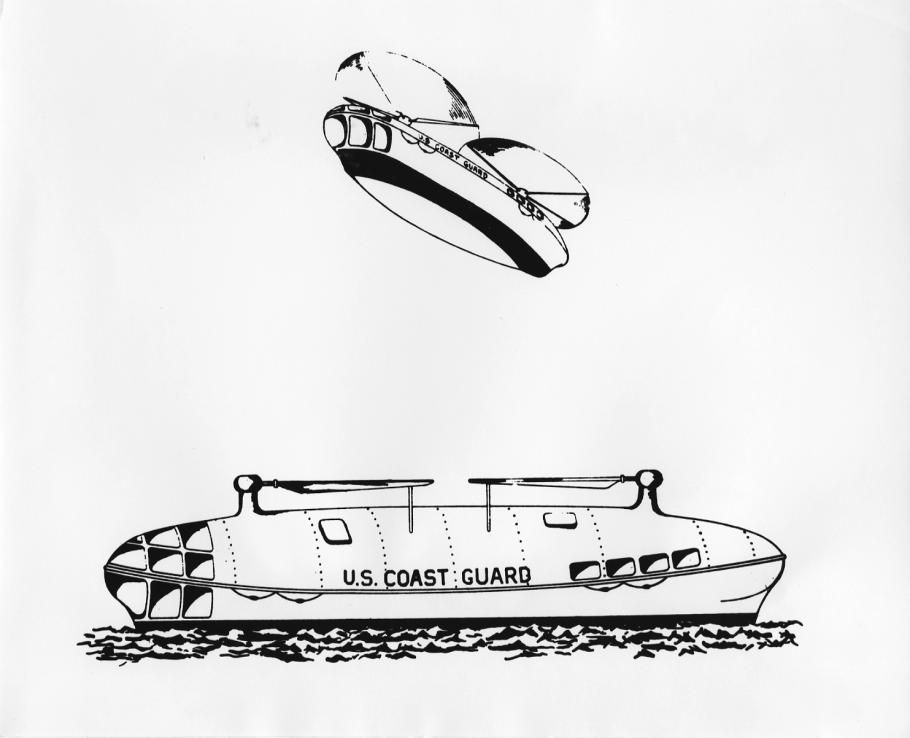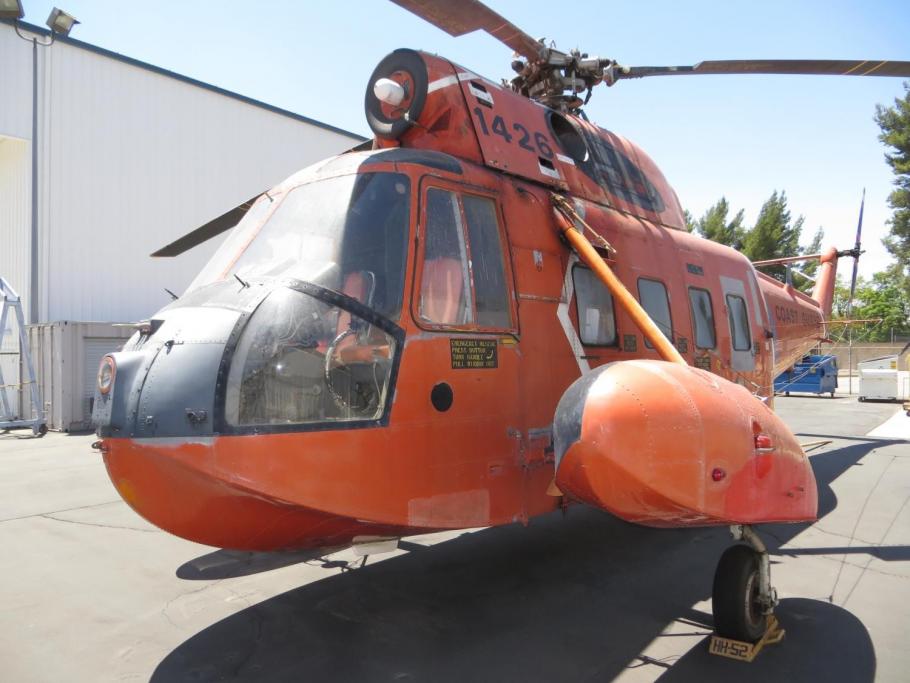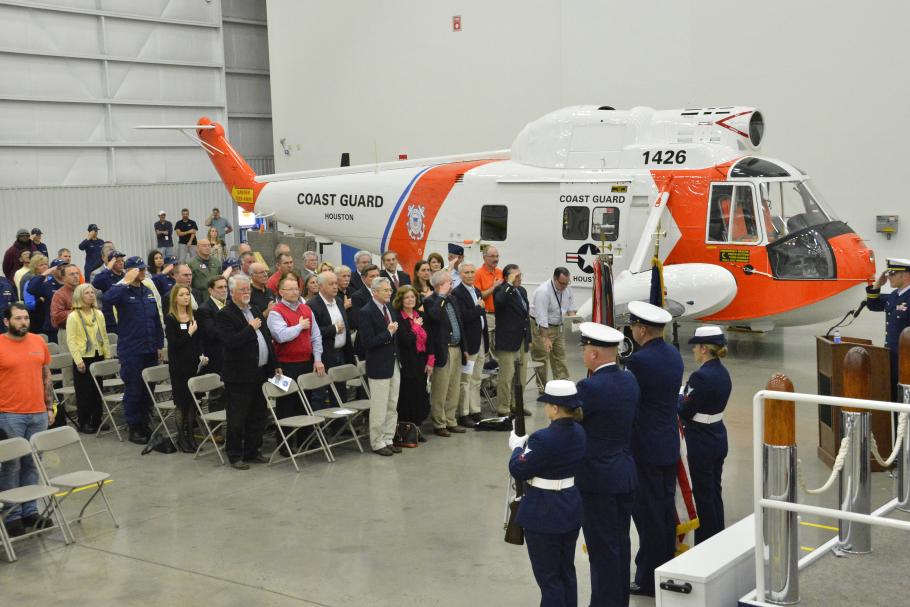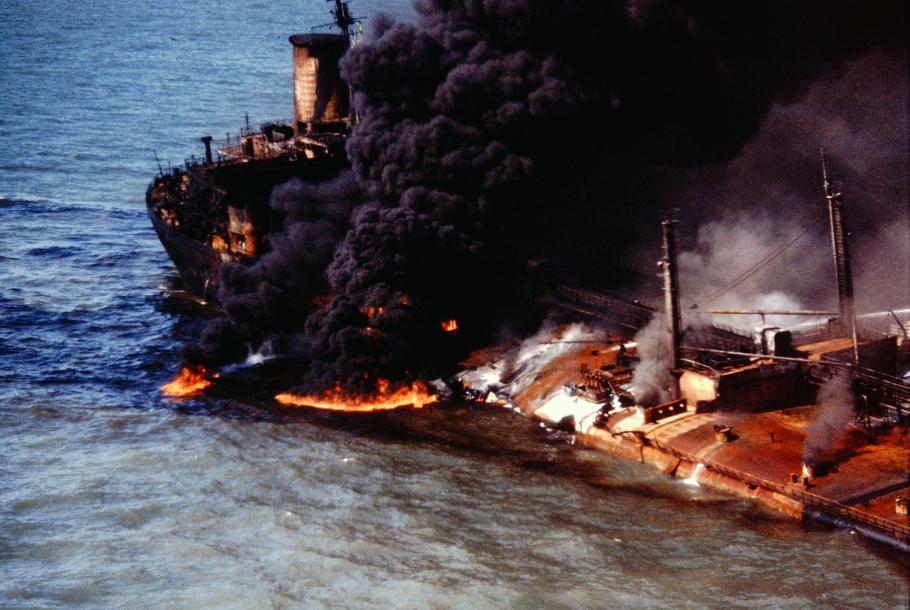

Celebrating the Centennial of Coast Guard Aviation with the Seaguard
Mar 14, 2016
By Roger Connor
Unless you live in a coastal area, or on one of the nation’s waterways, the U.S. Coast Guard is usually out of sight, out of mind, unless something very wrong happens. Unfortunately, this sometimes means that they are overlooked in their significance to our national welfare and security as well as in terms of their own historical legacy and contributions to aerospace. While the National Air and Space Museum has long recognized the importance of the Coast Guard, the Museum has never before had the opportunity or resources to acquire and display an appropriate Coast Guard aircraft. After an 11-year effort, we are finally able to do that, conveniently in conjunction with the Centennial of Coast Guard aviation – celebrating April 1st, 1916, when the Coast Guard’s first aviator, Elmer Stone, reported for flight training with the Navy in Pensacola, Florida.
Our Museum has been a showcase of many milestones of vertical flight, with America’s first successful rotary wing aircraft, the first helicopter accepted for military service, the first turboshaft driven helicopter, and the first truly successful tilt rotor. We also have outstanding examples of operational rotorcraft like the Sikorsky HO5S-1 that rescued hundreds in the Korean War or a Bell UH-1H with 2,500 combat hours in Vietnam, but the non-combat, life-saving role has not been showcased in the Museum before. Now, we have our first Coast Guard aircraft – the Sikorsky HH-52A Seaguard.
Rescuing people at sea has always been a hazardous undertaking and the idea of being able to pluck someone from a distressed vessel from above goes back to the earliest days of powered flight as this December 1913 Flying editorial about the potential of airplanes to have rescued Titanic survivors illustrates. Between the World Wars, the Coast Guard helped pioneer air-sea rescue with flying boats and amphibian aircraft. However, these airplanes required relatively smooth waters in which to operate and were generally impractical for most open ocean operations, especially when the weather was bad and they were most needed. The advent of the hoist-equipped helicopter during World War allowed this idea to become practical. Unfortunately, through the 1950s, helicopters lacked the range and power to give the Coast Guard the air-sea rescue capability that pioneers like Frank Erickson had sought.
A 1944 vision of what the Coast Guard wanted in an amphibious rescue helicopter.
The development of turbine-powered helicopters in the mid-1950s cracked the problems of range and payload for medium-size helicopters. In 1958, Sikorsky Aircraft anticipated the Coast Guard’s long-standing desire for this capability by developing its S-62, an amphibious turbine-powered helicopter that recycled many dynamic components from the S-55, designed in the late 1940s. Ironically, the Coast Guard initially passed in favor of another design, and Sikorsky was forced to market the S-62 for airline service, for which it was not well suited. The Coast Guard eventually came around to the type and ordered 99 of them, which began entering service in 1962 as the HH-52A Seaguard. The Seaguard remained in service until 1989.
While the Coast Guard’s current fleet of MH-60 and MH-65 helicopters has eclipsed the Seaguard’s time in service and its achievement of 15,000 lives saved, the HH-52 is still beloved within Coast Guard aviation as the service’s first helicopter that could meet their mission requirements. The aircraft was small enough to deploy aboard cutters, and its amphibious characteristics gave it a degree of safety in over-water operations that was missing in other helicopters. Natural disasters, the emerging war on drugs, and maritime accidents ensured that HH-52 fleet had ample opportunity to demonstrate remarkable feats of heroism.
Our HH-52A, known by its Coast Guard serial number, 1426, is fully representative of the broad sweep of service provided by the type. It came off the Sikorsky production line in March 1967 and then spent two years in St. Petersburg, Florida, three years in San Juan, Puerto Rico, three years in Detroit, Michigan, three years in North Bend Oregon, and then 10 years in Houston, Texas. In 1989, the helicopter 1426, along with all remaining HH-52s, retired from the Coast Guard. Pilot Stephen Goldhammer ferried the aircraft from Houston to the North Valley Occupation Center. The aircraft remained there until several years ago when the Coast Guard Aviation Association discovered it there while looking for an HH-52 aircraft for restoration that the Coast Guard could then transfer to the National Air and Space Museum. The restoration effort became known as ‘Project Phoenix’ and its installation at the Steven F. Udvar-Hazy Center in coming days will be one of the crowning events in the Coast Guard’s celebration of its centennial of aviation.
1426 completed its service with 12,619 flight hours. It made particularly significant rescues in 1969 and 1979. In May 1969, it was involved in the rescue of 104 Mormon schoolchildren from a vessel on fire in the Gulf of Mexico near Tarpon Springs, Florida. Its greatest fame came in 1979 when it was a first responder to one of the worst modern maritime disasters in the Gulf of Mexico when the Liberian-flagged tanker Burmah Agate carrying 300,000 barrels of crude oil collided with the Liberian-flagged freighter Mimosa off Galveston, resulting in a massive fire. In three flights, Pilots J.C. Cobb and Chris Kilgore along with Petty Officer Thomas Wynn rescued 22 survivors (another helicopter then rescued an additional five), including the only two survivors from the inferno of the tanker. On the first flight, they rescued 10 from the Mimosa, in addition to the pair from the Burmah Agate. This load of 12 put the helicopter in a dangerous overload from which it barely recovered. More details of this episode may be seen in this Washington Post article.
In addition to saving lives, in 1977 while at North Bend, Oregon, 1426 participated in one of the larger narcotics busts up to that time with the seizure of six tons of marijuana on the Panamanian-flagged Cigale off the Oregon coast. The restoration of 1426 was undertaken in Elizabeth City, North Carolina and took about 18 months. It may currently be seen in the Udvar-Hazy Center restoration shop and will soon be suspended in the Boeing Aviation Hangar.
Related Topics
You may also like

Related Objects
We rely on the generous support of donors, sponsors, members, and other benefactors to share the history and impact of aviation and spaceflight, educate the public, and inspire future generations. With your help, we can continue to preserve and safeguard the world’s most comprehensive collection of artifacts representing the great achievements of flight and space exploration.






